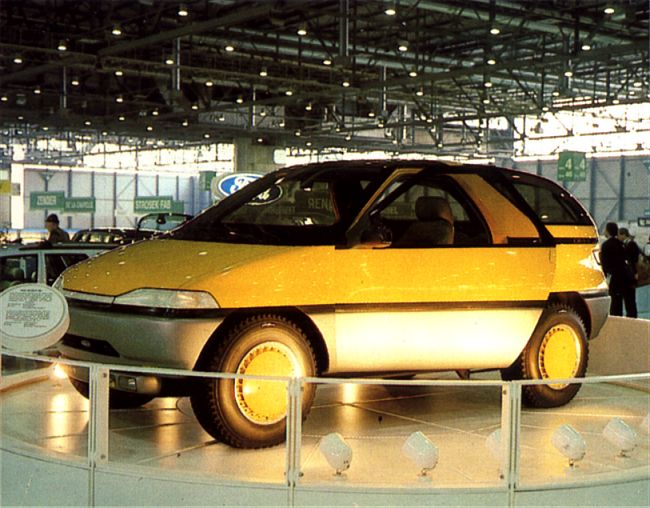Description
The Ford Bronco DM-1 was an experimental concept created in the mid-1960s as part of Ford’s early development work on what would become the production Bronco, introduced in 1966. The “DM” designation stood for Design Model, and the DM-1 was essentially a styling and engineering prototype built to test both the proportions and the design direction of Ford’s upcoming compact 4×4. At the time, Ford was responding to the growing popularity of rugged, off-road-capable vehicles like the Jeep CJ-5 and International Harvester Scout, and the Bronco DM-1 marked one of the first tangible steps toward Ford’s entry into that segment.
The DM-1’s exterior design already showcased the key elements that would define the first-generation Bronco. It had a boxy, upright body with flat panels, a simple rectangular grille, and short overhangs, all of which emphasized durability and functionality. The front fascia featured round headlights set into a clean, horizontal grille, a look that carried directly into the production model. The proportions were compact but sturdy, with a tall stance and squared-off wheel arches that signaled off-road capability.
Inside, the Bronco DM-1 was spartan and utilitarian, designed more for durability than comfort. Seating was minimal, with a simple bench or bucket-seat arrangement, and the dashboard was plain and functional. Controls were straightforward and easy to reach, echoing the practical, work-focused nature of early sport-utility vehicles. The cabin design reinforced the DM-1’s role as a tool for ranchers, farmers, and outdoor enthusiasts, rather than as a passenger-focused family vehicle.
Mechanically, the DM-1 was built to evaluate components and packaging rather than deliver polished performance. It likely used Ford’s small six-cylinder engine at first, paired with a manual transmission and four-wheel-drive system. The emphasis was on compact size, maneuverability, and toughness, with a simple ladder-frame chassis and solid axles that would carry over to the production Bronco. Engineers used the DM-1 to test suspension setups, drivetrain layouts, and body proportions, ensuring the vehicle would meet both on-road and off-road needs.
The Bronco DM-1 was shown internally and in limited design circles, serving as both a proof-of-concept and a styling mock-up to gather feedback. It played a critical role in refining the look of the Bronco before Ford committed to tooling for production. By the time the Bronco debuted in 1966, the design had been smoothed out slightly, but the DNA of the DM-1 was still clearly visible in the final product.
Today, the Ford Bronco DM-1 is remembered as an important step in the birth of one of Ford’s most enduring and iconic vehicles. While it was never intended for production itself, it represented Ford’s first serious commitment to building a compact 4×4, setting the stage for the Bronco’s decades-long legacy. The DM-1 stands as a piece of Ford history, embodying the experimental spirit of the 1960s when new vehicle niches were being explored and defined.
